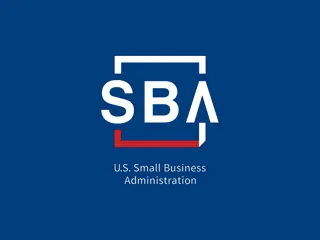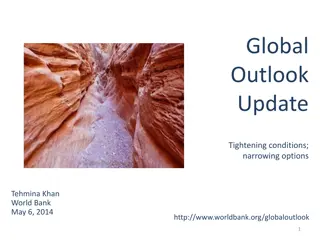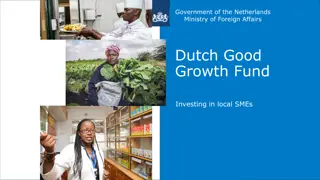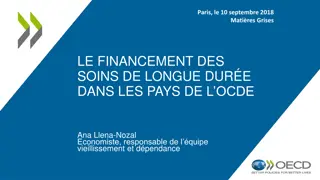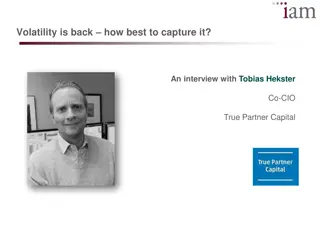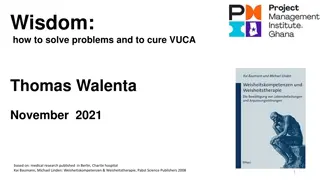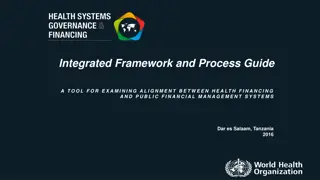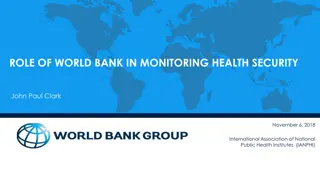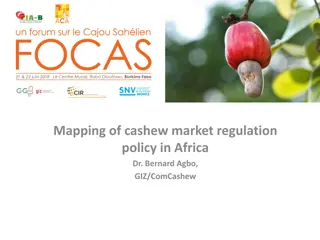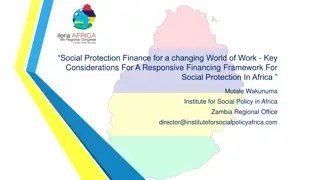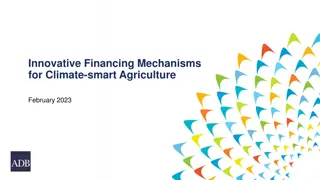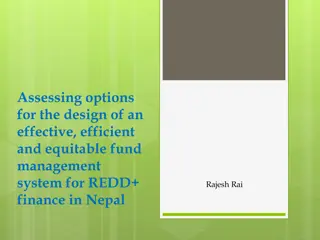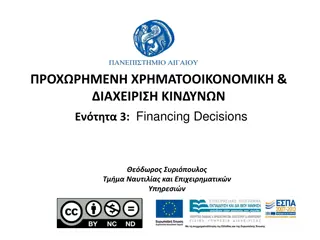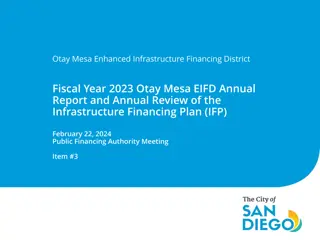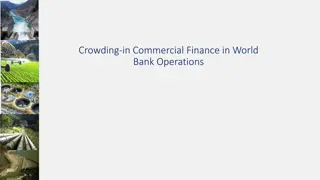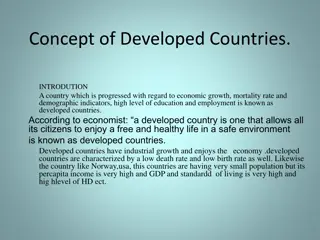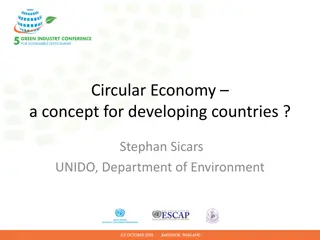Managing Health Financing Volatility in Developing Countries
Health financing volatility in developing countries poses challenges that lead to value destruction and adverse impacts on procurement systems and end users. Examples of negative impacts include stock-outs, higher costs, and additional emergency expenses due to unpredictable aid disbursements. Leveraging techniques from the private sector, such as receivables financing, can help recipient countries manage volatility and improve the efficiency of health commodity procurement.
Download Presentation

Please find below an Image/Link to download the presentation.
The content on the website is provided AS IS for your information and personal use only. It may not be sold, licensed, or shared on other websites without obtaining consent from the author. Download presentation by click this link. If you encounter any issues during the download, it is possible that the publisher has removed the file from their server.
E N D
Presentation Transcript
Pledge Guarantee For Health (PGH) Reproductive Health Supplies Coalition: Addis Ababa June 24, 2011
Health financing volatility in developing countries destroys value and has adverse impacts on the procurement system and end users High volatility in health aid Adverse impact on patients and systems Value destruction due to aid volatility Examples of negative impacts Volatility of health aid is higher than government health spending1 Lost $0.07-0.28 for every $1 of aid due to the unpredictability1 Stock-outs: Recipients run out of key heath commodities or face dangerously low stocks while waiting for donor funding $1.00 (1993 2005) 7-28% of value lost Health aid volatility Higher per item costs: Delayed funding leads to acute shortages which reduces recipient bargaining power and often leads to supplier charging risk premiums due to payment and production uncertainties Aid value $0.72 Additional emergency costs: emergency production and shipping fees to compensate for the time lost waiting for disbursement ODA in past 15 years Public health spending volatility Lack of access to financial tools for recipients of donor financing to effectively manage volatility 1 (1) Source: P. 4, Brookings Institution. August 2008. Smooth and Predictable Aid for Health A Role for Innovative Financing? ; Dalberg analysis.
What can we learn from the private sector? Commercial bank 5 2 Manufacturer uses the future receivable as collateral to obtain short- term bridge financing from a bank Manufacturer repays bank plus interest 4 In 6 months, store forwards remaining 50% payment Wholesale / retail store Inputs source Manufacturer 3 1 With the financing secured from the bank, the manufacturer obtain its inputs more efficiently to lower its cost of operations In order for the store to purchase a larger order, manufacturer offers half payment upfront and half in 6 months Receivables financing, where companies use commitments by customers to pay as collateral in a financing agreement, is a common method of freeing up capital to invest in improving a companies business Recipients of donor funding can use donor commitments as receivables to obtain short-term financing to improve the efficiency of health commodity procurement 2
ILLUSTRATIVE PGH increases access to health commodities by allowing donor recipients to leverage L/Cs to accelerate procurement Supplier Procurer Recipient Bank Co. Guarantor Donor Timing USAID 1) Donor commitment to fund a $20 M procurement of 1M implants at $20/unit Jan 11 Merck UNFPA MOH WB Bayer JSI Civil Society KfW Pfizer PFSA 2) 50%Guarantee ($10M) DFID AZ Feb 11 PSI Stanbic PGH Textiles EU Gov agency SBSA J&J 3) $20M L/C Access GSK Eco 4) $20M Tender PGH May 11 5) 1M implants delivered 6) $20M 30 day Invoice 7) $20M payment of invoice within 30 days of receipt Sep 11 8) $20M donor funding disbursement plus financing cost Status quo Dec 11 3
PGH can utilized in three different ways Donor funded procurement supply chain Traditional bridge financing backed by a 50% PGH guarantee: For recipients of donor funding, recipients can use donor commitments as collateral along with a 50% PGH guarantee to secure an L/C from commercial banks in order to accelerate procurement Donor Recipient Whole-sale bridge financing backed by a 50% PGH guarantee: Procurement agencies that are also experiencing delays in disbursements from their own donors can use donor commitments as collateral and along with a 50% PGH guarantee can secure an L/C from commercial banks to provide immediate liquidity to improve efficiency of their operations Procurer Trade financing backed by a 50% PGH guarantee: Suppliers often price in the risk of doing business (likelihood of delay of payment and extra costs due to erratic orders), however with a PGH direct guarantee backing specific donor funded health procurement, suppliers can extend better terms (price discounts and delayed invoices) enabling recipients of donor funding to accelerate access to much needed health commodities Supplier 4
PGH delivers better value for money by accelerating procurement, removing risks that lead to price premiums and empowering procurers to leverage buyer power and negotiate better terms Accelerated Ability to rapidly issue bridge funding while waiting for donor disbursement to avoid stock- outs which can have dangerous impacts on both patients and the community Efficient Empowered With better control of the procurement timing recipients will be able to avoid emergency production and delivery which are costly and come at the expense of additional beneficiaries Allow buyers to leverage negotiating power by removing risks in the procurement process that cause suppliers to price in premiums (e.g. better payment certainty, pooled procurement, etc) 5
Getting better value for our money could reduce the unmet needs of the Reproductive Health Sector High volatility in health aid Adverse impact on patients and systems Value destruction due to aid volatility Examples of negative impacts Volatility of health aid is higher than government health spending1 ~$60M* in value is lost due to inefficiencies (funding, logistics, delivery, etc..) Lost $0.07-0.28 for every $1 of aid due to the unpredictability1 Stock-outs: Recipients run out of key heath commodities or face dangerously low stocks while waiting for donor funding $1.00 (1993 2005) 7-28% of value lost Health aid volatility Higher per item costs: Delayed funding leads to acute shortages which reduces recipient bargaining power and often leads to supplier charging risk premiums due to payment and production uncertainties Aid value $0.72 Additional emergency costs: emergency production and shipping fees to compensate for the time lost waiting for disbursement ODA in past 15 years Public health spending volatility 6 *Assumes 25% value loss of the current 2009 level commitment of $239 M








